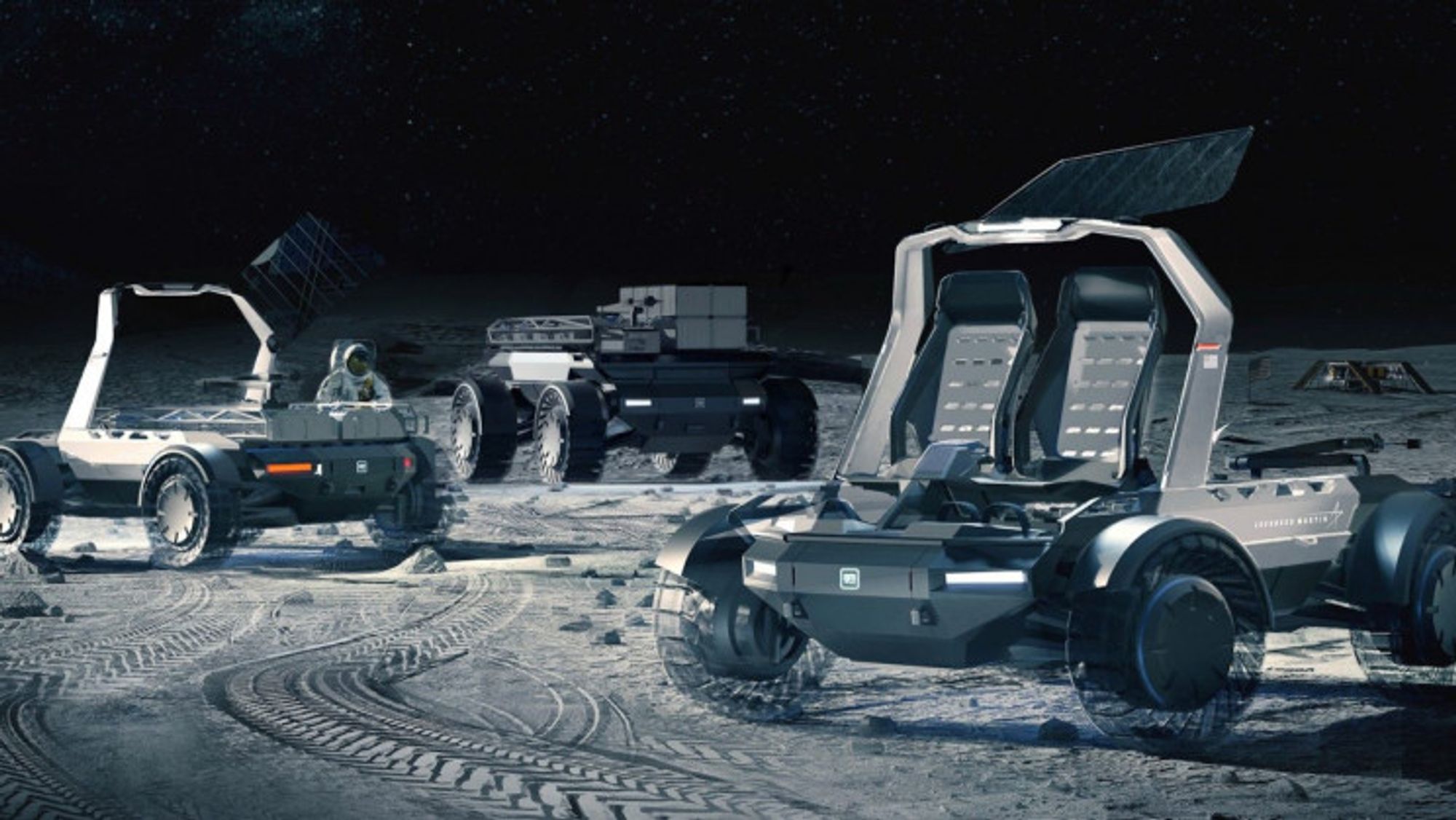An artist's impression of GM and Lockheed Martin's moon rovers. Lockheed Martin

General Motors and Lockheed Martin announced their plans to produce a series of electric moon rovers for future commercial space missions.
The companies said they plan aim to test the batteries developed by GM, in space later this year. They also set the ambitious goal of testing a prototype vehicle on the moon by 2025, according to CNBC.
Hummer EV technology boosts new electric moon rover design
The firms first teased their plans to build a moon buggy in May last year, stating that their battery-powered vehicle would help to "enable and sustain long-term exploration of the lunar surface".
Those plans were announced as part of a collaboration with NASA for its upcoming Artemis moon missions. The two companies' new announcement means they will aim to earn contracts from the likes of SpaceX and Amazon founder Jeff Bezos' Blue Origin.
The vehicle will utilize GM's Ultium technology, which is also fitted in the company's electric Hummer. GM says it is drawing from its work on the Hummer EV's various systems, including its system controls, torque management, and battery management for the new electric moon rover. The automaker recently announced a series of partnerships that will see it test the technology on trains, boats, and other forms of transportation.
Electric moon rover tests simulate space conditions on Earth
GM is using a state-of-the-art simulator at its testing lab that emulates conditions on the moon's surface, including gravity conditions. The company has a history of helping to develop space technology, having been one of the subcontractors that helped Boeing develop a similar vehicle used for three of NASA's Apollo missions.
The new electric moon rover is being designed to be able to survive at least a decade on the moon's surface, and it will be able to operate both autonomously and with astronauts driving. It will have a top speed of roughly 12 mph (19 kph), which is more than double the speed of the 6.8 mph (11 kph) Apollo rovers.
Chris Hadfield-backed startup AstroLab recently revealed its own design for a logistics-focused moon buggy called the Flexible Logistics and Exploration (FLEX) vehicle. That rover has the capacity to carry a 3,300-pound (1,500) kg payload, and it can be driven remotely or with two astronauts aboard. A Japanese firm GITAI recently revealed another robotic rover, called R1, that looks like a centaur in collaboration with JAXA. The surge in new designs is thanks largely to NASA's plans to establish and maintain a constant presence on the moon with its upcoming Artemis missions.
The U.S. space agency hopes to soon carry out a wet dress rehearsal for its Artemis I mission, which will send a rocket around the moon and back. Artemis II will make the same trip with astronauts aboard, while Artemis III will send astronauts back to the moon's surface for the first time since 1972 aboard a SpaceX Starship launch vehicle.